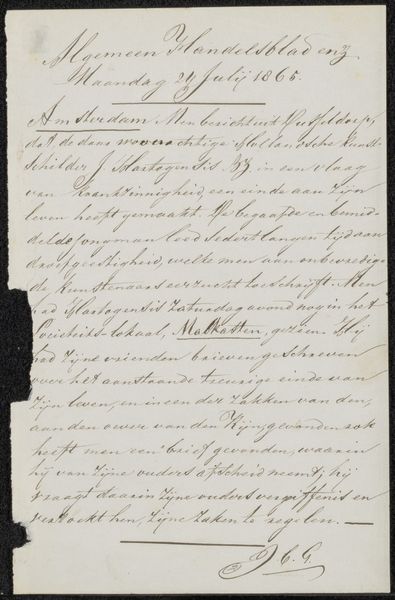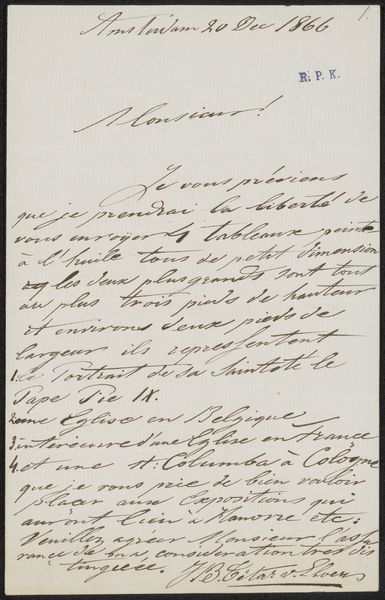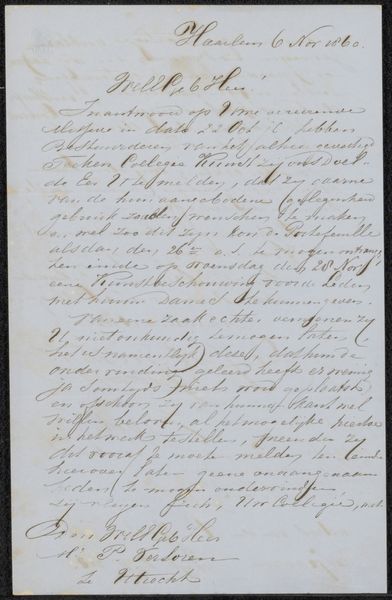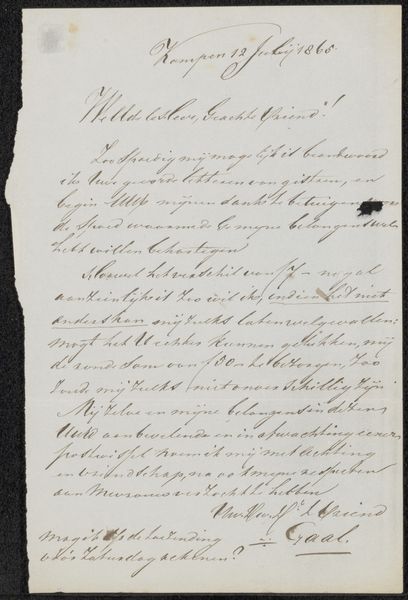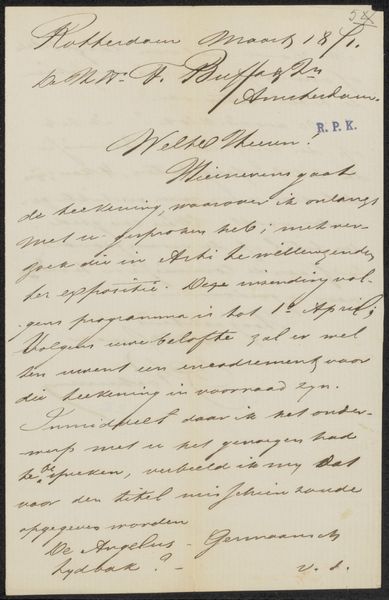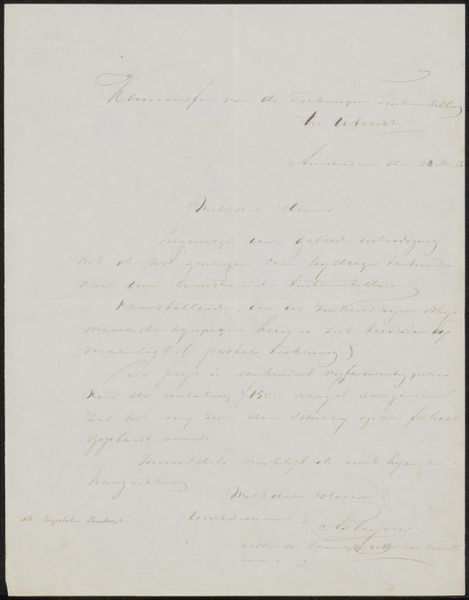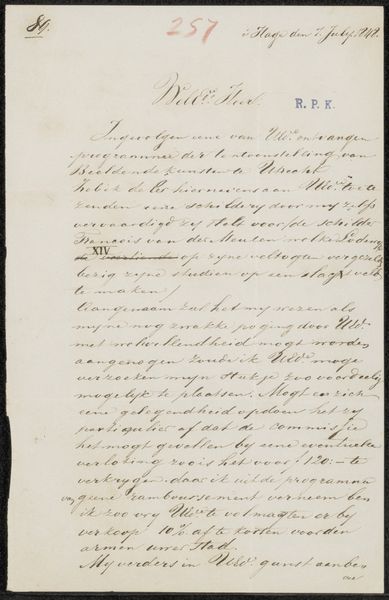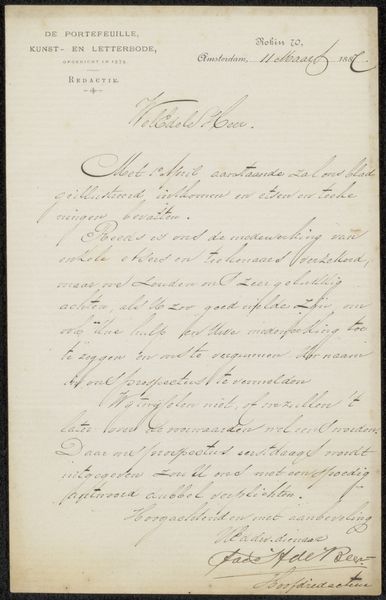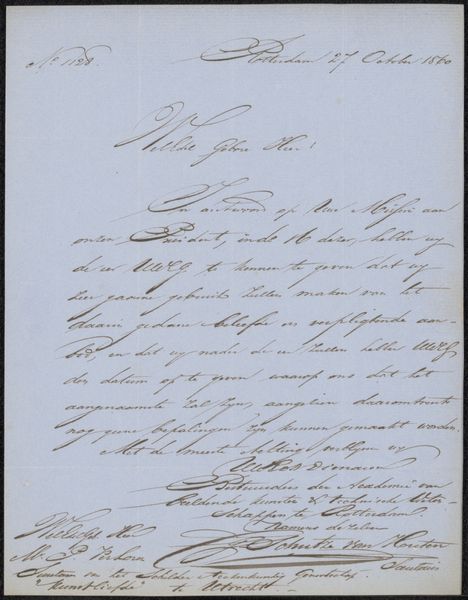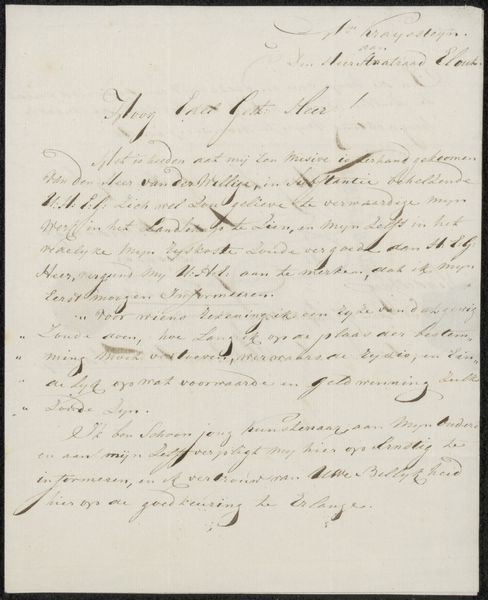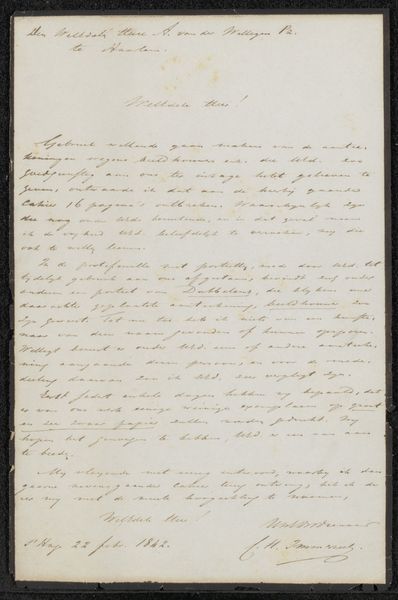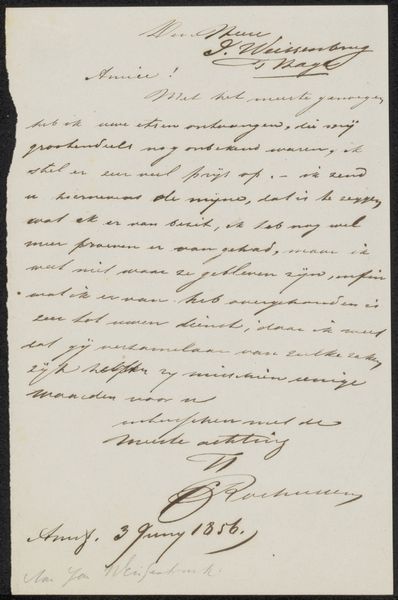
paper, ink, pen
#
toned paper
#
water colours
#
paper
#
ink
#
pen
#
watercolor
Copyright: Rijks Museum: Open Domain
Curator: Here we have "Brief aan Christiaan Immerzeel," which translates to "Letter to Christiaan Immerzeel," potentially from 1855, crafted by Gerrit Hendrik Bierman using pen, ink, and watercolors on paper. Editor: Well, my first impression is that it reads more as an artifact than a deliberate artwork. The tight script and faded watercolor give it the somber feel of a found historical document. Curator: Precisely! The formal qualities, particularly the texture of the aged paper and the delicate linework, evoke a sense of intimacy and immediacy, despite the language barrier for most modern viewers. The watercolor adds subtle washes, providing depth to the script without obscuring its legibility. Editor: From a historical viewpoint, letters such as these were crucial forms of communication, but beyond that, they offer valuable insights into the social and cultural contexts of their time. This isn’t simply an exchange of information; it embodies relationships and potentially untold stories between sender and recipient. Who was Christiaan Immerzeel, and what relationship did he have with Bierman? Curator: That is precisely what this document suggests! We see through careful application of light and shadow that the lines of script are quite structured on the page. Notice the visual contrast that the calligraphic nature provides—there is no heavy handed mark making here, rather control. The form adheres directly to its function. Editor: Absolutely. And thinking about its place in the public sphere today, displayed within the white cube of a museum setting, how might that alter the interpretation? Is it elevated to art, or simply presented as a piece of historical ephemera? Curator: The museum frames this personal exchange, emphasizing the artist’s presence even when hidden within this missive, revealing layers of human expression through form and language, no? It invites an empathetic gaze. Editor: Agreed, though the interpretation is layered; the institutional framing plays a crucial role in assigning cultural value and prompting viewers to reconsider the meaning encoded within. It causes one to consider public accessibility versus private ownership as well. Curator: Very well, this piece exemplifies the union of everyday life with a form of practiced intentional creation—form, purpose, place. A telling materialization. Editor: And a salient reminder that historical records are not just dry facts, but intimate encounters across time.
Comments
No comments
Be the first to comment and join the conversation on the ultimate creative platform.
